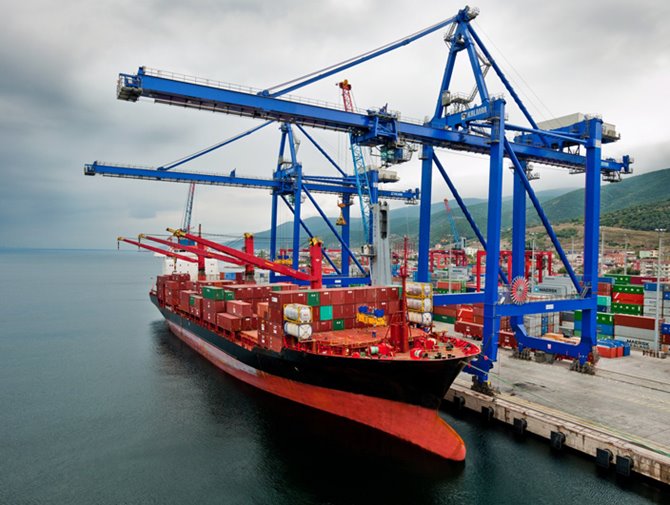Ship to Shore Crane:
Design and Mechanics

Abstract
The report focuses on improving the design of a STS-crane. This is done by devising 3 different
concepts of booms, trolleys and hoisting mechanisms. These concept sketches also include the
position of the hoisting mechanism.
Secondly, the functionality concept was chosen as final design and functioned as starting posi-
tion for further improvement and detailing. The design was further analyzed and designed with
according calculations and tables. The design was dimensioned and detailed sketches were made
in Solid Works, which were all added to the appendix.
The third step was to assign materials to the different parts of the crane.
For this part first a list of all the important properties that had to be taken into account for all
the parts was made. In every part some different properties were taken into account this is based
on the importance of the properties of that part. For example in some parts weldability was
very important because a welding connection has to be used. Although also properties like yield
strength, cold forming, low density, corrosion and the Poisson ratio were taken into account to
find out which material is the best to use. With the chosen properties the best materials could
be found using the CES-edupack program and articles about materials that are all ready used
nowadays in part for an STS-crane.
Now that all the materials are known the more detailed parts could be worked out. Also for this
part firstly a list of properties was made to find out which properties are important for the parts.
Knowing all the properties a choice for the type of motor, driving system and gearbox can be
made. With the material type that is used for the frame and boom known, FEM calculations
were done using the poison rate, density and young’s modulus of the chosen HSLA steel: ASTM
A656. With the FEM program calculation as stresses, inertia, displacements and weight were
calculated. The design chosen showed that it was capable of sustaining its form under a load of
100 tons.
Than some machine element calculations of a weld, bolt, key and shaft had to be made to
calculate especially the thickness at which the parts can handle the applied stress on it. With
this information a detailed design was made in which the known dimensions are displayed.
Finally the chosen system to transfer power and torque through the motor to the drum that
collects the cable is gears. There are two motors and one gearbox. The gearbox includes 2 bevel
gears, one is connected to the motors shaft and the other is connected to the drums shaft. The
chosen motor is the simotics SD motor with efficiency class IE3/premium and IC411-totally-
enclosed fan-cooled, because this motor satisfy the most properties that have to be taken into
account.
After the final concept there were still some things that could be optimized in the redesign.
Project report
The project report can be found in the folllowing downloadable pdf:
Code for this blog: